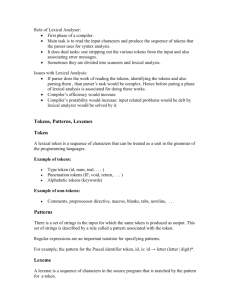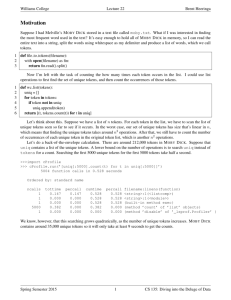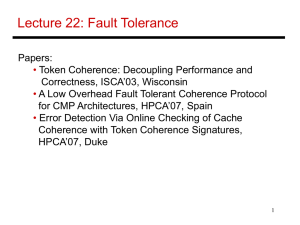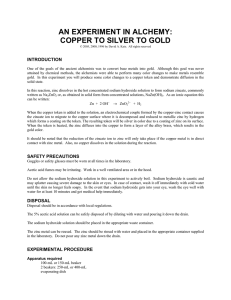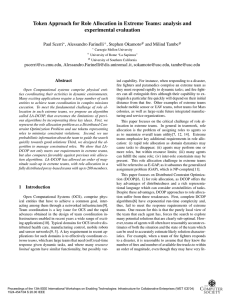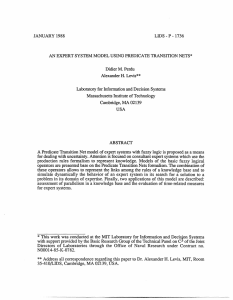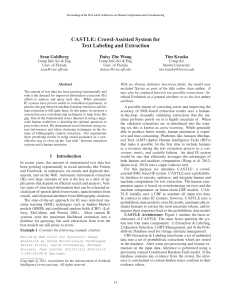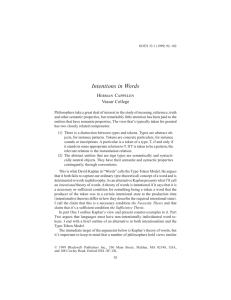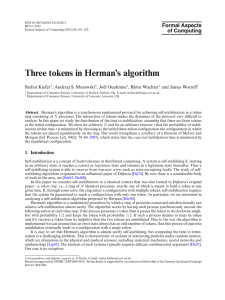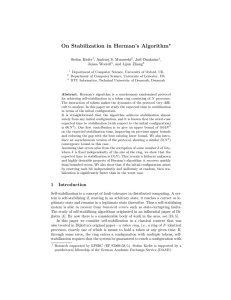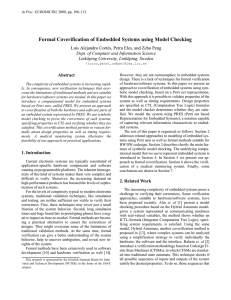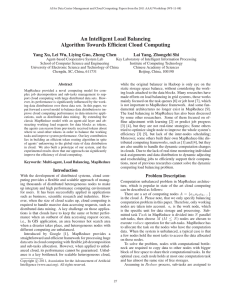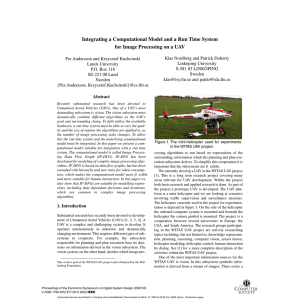Slides
advertisement
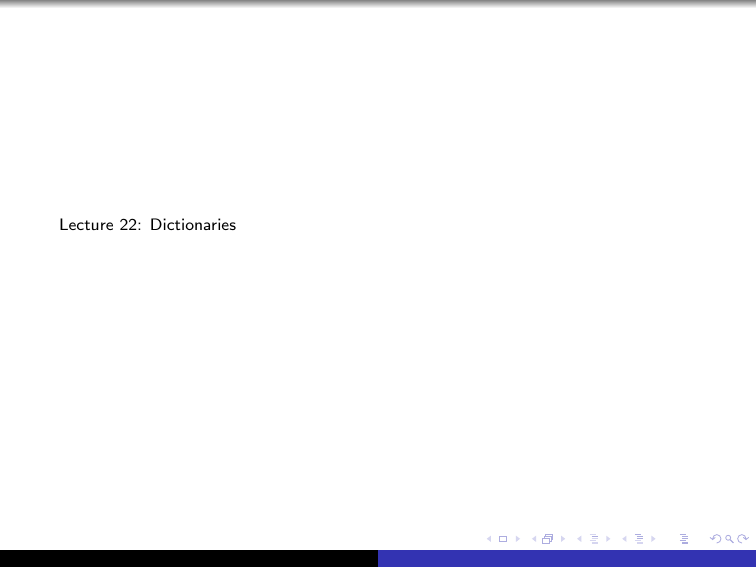
Lecture 22: Dictionaries
Counting Words
Suppose I had Melville’s Moby Dick stored in a text file called moby.txt. What if I
was interested in finding the most frequent word used in the text? It’s easy enough to
hold all of Moby Dick in memory, so I can read the entire text into a string, split the
words using whitespace as my delimiter and produce a list of words, which we call
tokens.
1
2
3
def file to tokens(filename):
with open(filename) as fin:
return fin.read().split()
Now I’m left with the task of counting the how many times each token occurs in the
list. I could use list operations to first find the set of unique tokens, and then count
the occurrences of those tokens.
1
2
3
4
5
6
def wc list(tokens):
uniq = []
for token in tokens:
if token not in uniq:
uniq.append(token)
return [(t, tokens.count(t)) for t in uniq]
Profiling our Code
>>>import cProfile
>>> cProfile.run(’[uniq[:5000].count(t) for t in uniq[:5000]]’)
5004 function calls in 0.528 seconds
Ordered by: standard name
ncalls
1
1
1
5000
1
tottime
0.147
0.000
0.000
0.382
0.000
percall
0.147
0.000
0.000
0.000
0.000
cumtime
0.528
0.528
0.528
0.382
0.000
percall
0.528
0.528
0.528
0.000
0.000
filename:lineno(function)
<string>:1(<listcomp>)
<string>:1(<module>)
{built-in method exec}
{method ’count’ }
{method ’disable’ }
Quadratic versus Linear
Quadratic versus Linear
Counting Words
1
2
3
4
5
6
7
counts = {}
for token in tokens:
if token in counts:
counts[token] += 1
else:
counts[token] = 1
return counts.items()
Practice: Building a Word Index
Suppose we wanted to create an index of the positions of each token in the original
text. Write a function called token locations that, when given a list of tokens,
returns a dictionary where each key is a token and each value is list of indices where
that token appears.
>>> l = "brent sucks big rocks through a big straw".split()
>>> print(token_locations(l))
{’big’: [2, 6], ’straw’: [7], ’brent’: [0], ’a’: [5],
’through’: [4], ’sucks’: [1], ’rocks’: [3]}







